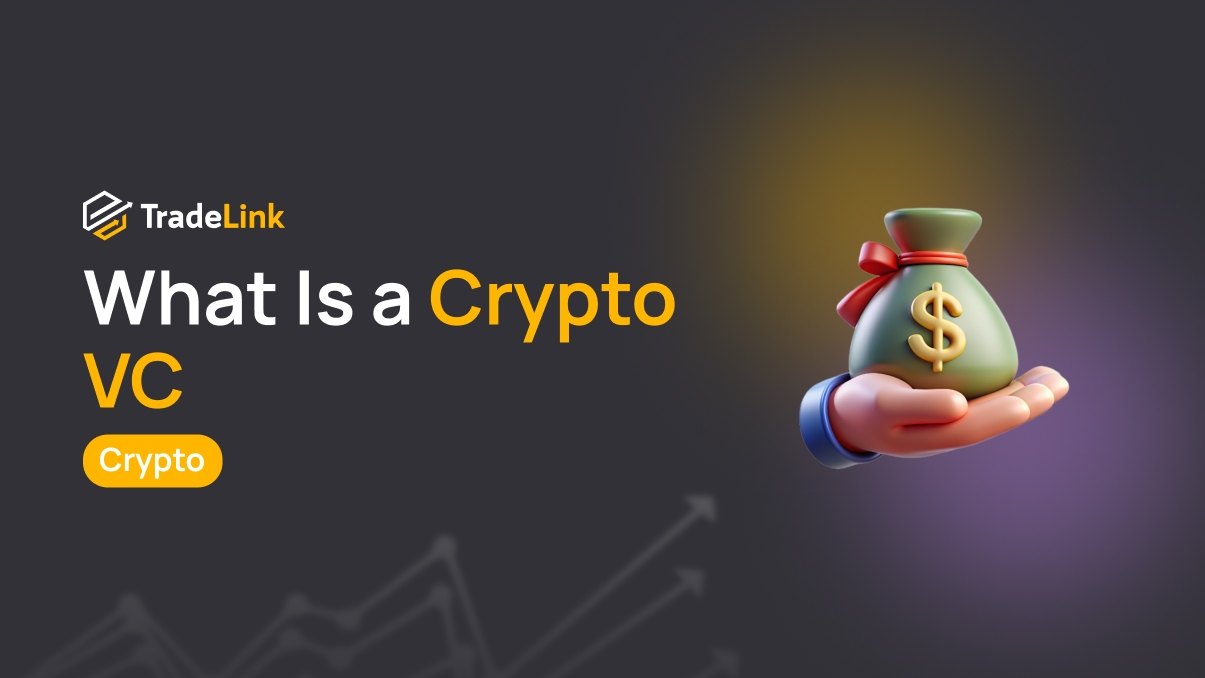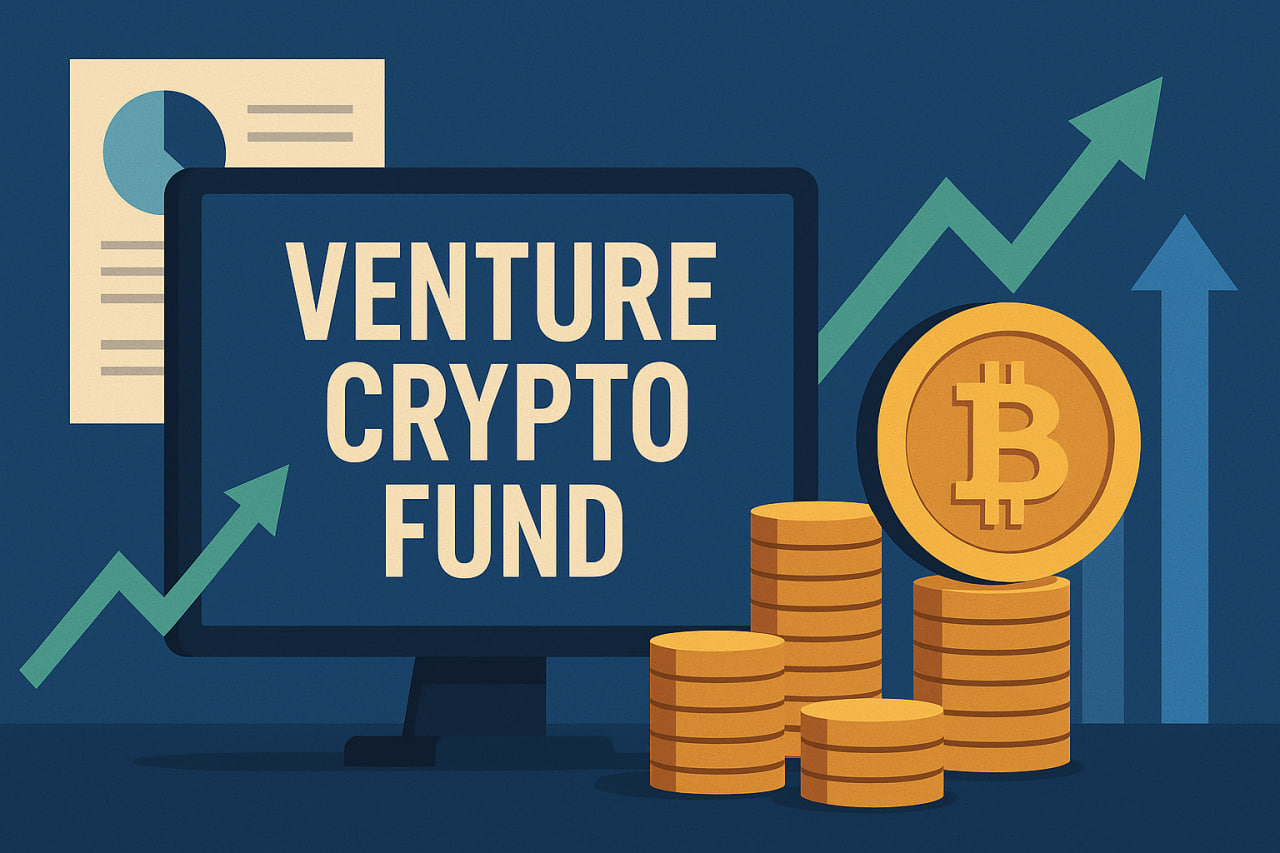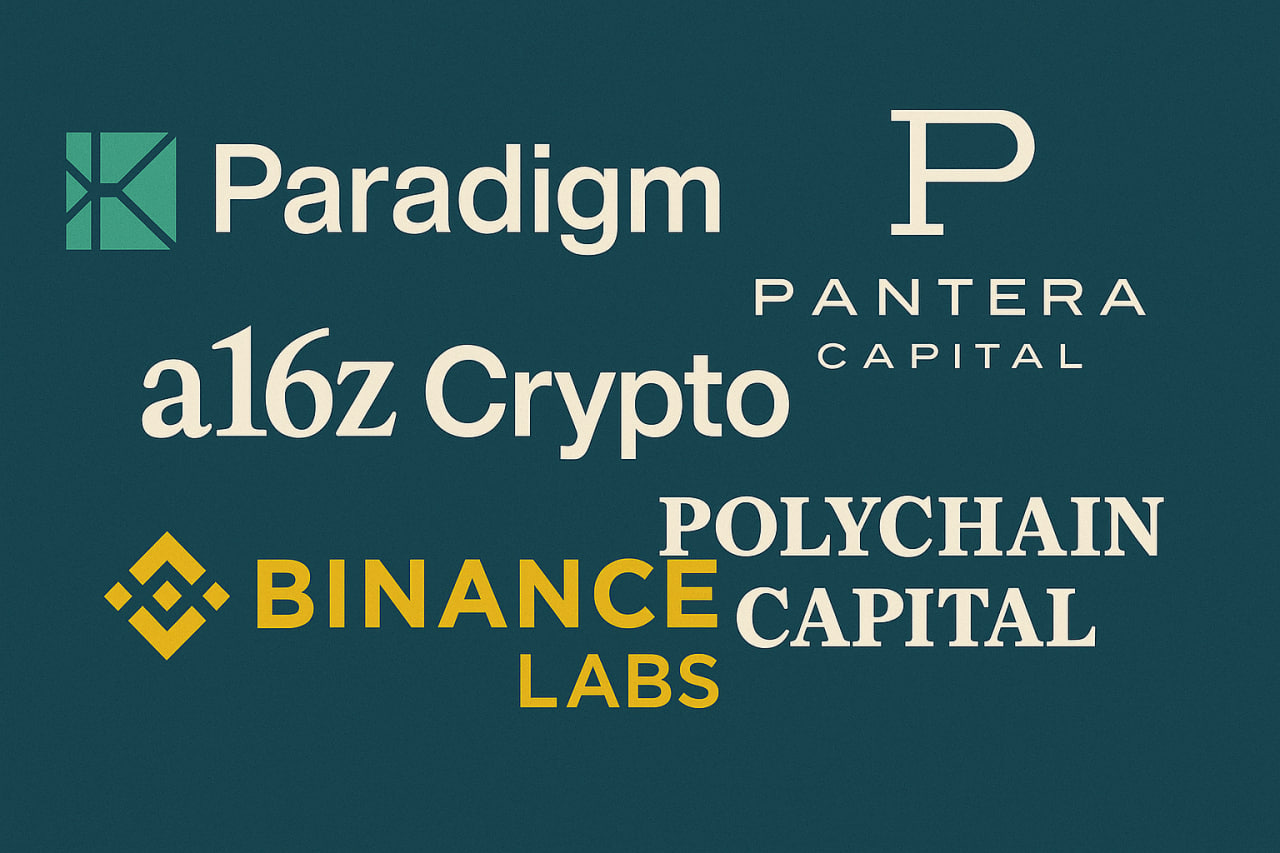What Is a Crypto VC and How Venture Capital Works in Web3

Contents
- Introduction
- What is Crypto VC and Why is it Needed
- How Crypto Venture Funds Operate
- How Crypto VC Differs from Traditional Venture Capita
- Popular Financing Models for Web3 Startups
- How Projects Secure Funding from Crypto VC
- Top Crypto VC Funds in 2025
- Benefits and Risks of Partnering with Crypto VC
- How Crypto VC Differs from Crypto Hedge Funds
- The Future of Venture Investments in Web3
- Conclusion
Introduction
The cryptocurrency market is rapidly transforming financial and technological ecosystems, attracting startups and investors alike. One of the key drivers of this process is Crypto Venture Capital (Crypto VC), which provides funding for promising blockchain and Web3 projects.
In this article, we will explore what Crypto VC is, how it operates, how it differs from traditional venture capital, the financing models used by Web3 startups, as well as the benefits, risks, and future of venture investments in Web3.
What is Crypto VC and Why is it Needed

Crypto Venture Capital refers to specialised investment funds that invest in startups and projects related to blockchain, cryptocurrencies, and decentralised technologies. These funds focus on advancing the Web3 ecosystem—a new generation of the internet built on principles of decentralisation, transparency, and user control over data.
Crypto VC funds play a critical role by providing startups with not only capital but also access to expertise, technological resources, and professional networks. They support early-stage projects, helping to build infrastructure for decentralised finance (DeFi), non-fungible tokens (NFTs), smart contract protocols, and other innovations. Without their involvement, many blockchain startups would struggle to overcome financial and organisational barriers to scaling.
Key Objectives of Crypto VC:
- Financing innovative projects
- Mitigating risks for fund investors through portfolio diversification
- Accelerating the development of the Web3 ecosystem by supporting infrastructure solutions
How Crypto Venture Funds Operate
Crypto VC funds follow a structured process that includes several stages:
- Identifying Promising Projects
Funds actively monitor the market, analysing trends, teams, and technologies. They participate in blockchain conferences, evaluate startups in accelerators, and track developer activity on platforms like GitHub. Often, funds discover projects through recommendations or partnerships with other funds. - Evaluation
Crypto VCs conduct thorough due diligence, assessing various parameters, including:- Technological Innovation: How unique the project is, and whether it addresses real problems
- Team: The experience and expertise of the founders
- Demand: Potential user and market interest in the product or service within the Web3 context
- Risks: Regulatory, technical, and market risks
- Investment Decision
After analysis, the fund decides whether to invest. This could involve taking an equity stake, purchasing project tokens, or a combination of both. Deal terms, including exit strategies and investor rights, are formalised in agreements. - Startup Support
Post-investment, funds provide more than just capital. They offer strategic guidance on management, marketing, partnerships, and market entry. This is particularly crucial for early-stage startups that require mentorship. - Exit Strategy
Crypto VCs aim for long-term profitability, achieved through token value appreciation, exchange listings, or selling their stake in the project.
How Crypto VC Differs from Traditional Venture Capita

Crypto venture funds have distinct characteristics that set them apart from traditional venture capital:
| Characteristic | Crypto VC | Traditional VC |
|---|---|---|
| Investment Focus | Blockchain, Web3, DeFi, tokens, infrastructure | Tech, IT, biotech, fintech, other industries |
| Investment Tools | Equity, tokens, SAFT (Simple Agreement for Future Tokens) | Equity, convertible bonds |
| Exit Timeline | Typically under 5 years | Longer (IPO, company sale, 5–10 years) |
| Risks | High volatility, regulatory uncertainty | Market and operational risks, lower volatility |
Crypto VCs often invest in projects at the idea stage, while traditional VCs prefer startups with proven business models. Tokens also add flexibility, allowing investors to participate directly in a project’s economy and enabling startups to raise capital without losing control.
Popular Financing Models for Web3 Startups
Web3 startups utilise a variety of capital-raising mechanisms tailored to the blockchain ecosystem:
- Seed Round
Early-stage funding for prototype development typically ranges from $100,000 to $2 million. Investors receive equity or tokens. - Private Sale (Token Sale)
Sale of tokens to a limited group of investors before a public offering. This is a popular method for project planning to issue their own tokens. - Token-Based Fundraising
Includes ICO (Initial Coin Offering), IDO (Initial DEX Offering), and IEO (Initial Exchange Offering). Startups issue tokens that investors purchase with cryptocurrency, gaining access to the project’s ecosystem. - Crypto Accelerators
Some funds, such as Yzi Labs (formerly Binance Labs) or Web3-focused Y Combinator programs, offer startups specialised programs that include funding, mentorship, and investor connections. - Venture DAO
Decentralised Autonomous Organisations (DAOs) pool investors for collective project funding.
How Projects Secure Funding from Crypto VC
Attracting investment from Crypto VCs requires careful preparation and a strategic approach. The process involves several key steps:
- Developing a Strong Project
The project begins with a clear concept that offers a unique value proposition, such as addressing blockchain scalability issues or simplifying access to decentralised finance (DeFi). - Preparing Documentation
Projects create materials for investors, including:- Whitepaper: A detailed description of the project, its technology, and tokenomics.
- Pitch Deck: A presentation highlighting key metrics, team information, and development plans.
- Roadmap: A clear plan outlining project development stages.
- Finding Investors
Projects identify potential investors through various channels:- Participation in blockchain conferences and hackathons.
- Contacting funds via their official websites or professional networks like LinkedIn.
- Analysing active funds using platforms like CryptoRank or PitchBook.
- Demonstrating Progress
Investors prioritise projects that show results, such as an active user base, a working prototype, or partnerships. For example, a successful testnet launch or integration with a well-known blockchain enhances a project’s appeal. - Legal Compliance
Projects must comply with regulatory requirements, particularly in the jurisdictions where investors operate. This includes verifying the legal structure and adherence to local laws.
Top Crypto VC Funds in 2025

Several funds stand out for their influence and activity in the Web3 space:
| Fund | Specialization | Notable Investments | Features |
|---|---|---|---|
| Paradigm | Web3, DeFi, infrastructure | Uniswap, Cosmos, StarkNet, FTX | Focus on the early stages, community support |
| a16z Crypto | Blockchain, Web3, DeFi | Coinbase, Ripple, Optimism, dYdX | Broad expertise, large-scale funds |
| Pantera Capital | Cryptocurrencies, tokens, blockchain | Maker DAO, dYdX, NuCypher | Hybrid approach (VC + hedge fund) |
| Yzi Labs | Web3, infrastructure, and gaming projects | Polygon, Axie Infinity, 1inch | Ties to Binance exchange, accelerator programs |
| Polychain Capital | Protocols, DeFi, scalability | Coinbase, Uniswap, Scroll | Leader in assets under management ($2.6B) |
These funds actively support projects shaping the future of Web3 and have significant resources to scale startups.
Benefits and Risks of Partnering with Crypto VC
Benefits:
- Funding: Access to capital for development and growth.
- Expertise: Assistance with management, marketing, and tokenomics.
- Networking: Connections to partners, exchanges, and other investors.
- Reputation: Association with a well-known fund boosts project credibility.
Risks:
- Centralisation: Some funds may demand significant control over the project.
- Strategic Pressure: Investors may prioritise short-term profits, conflicting with long-term project goals.
How Crypto VC Differs from Crypto Hedge Funds
Crypto hedge funds focus on short-term speculative investments in tokens and cryptocurrencies, trading assets on exchanges to profit from market trends. In contrast, Crypto VCs invest in the long-term development of blockchain projects. Examples of crypto hedge funds include Multicoin Capital and Pantera Capital.
Key Differences:
- Investment Horizon: Crypto VC—medium/long-term; hedge funds—short/medium-term
- Objectives: Crypto VC develops projects; hedge funds maximise returns from assets
- Tools: Crypto VC invests in equity and tokens; hedge funds focus on liquid assets
The Future of Venture Investments in Web3

In 2025, venture investments in Web3 continue to grow despite market fluctuations. According to DeFi Report, over $13 billion was invested in crypto projects in 2024, indicating sustained investor interest.
Trends
- AI Integration: Investments in projects combining blockchain and artificial intelligence, such as Giza or Scale AI.
- Rise of Venture DAOs: Decentralised structures like The LAO gain popularity due to transparency and collective governance.
- Infrastructure Focus: Scalability protocols (Layer 2, like Optimism) and cross-chain solutions attract increasing capital.
- Regulatory Adaptation: Funds increasingly prioritise projects with clear legal structures.
Forecasts
Interest in Web3 investments continues to grow, with funding volumes for crypto projects increasing annually. Blockchain and decentralised systems are becoming more integrated into various sectors, from finance to data management.
At the same time, stricter regulatory oversight may enhance transparency and compliance, potentially making the market more accessible to new participants. Venture DAOs are likely to lower barriers for startups, fostering innovation, but their future role will depend on adapting to evolving market and legal conditions.
Conclusion
Crypto venture funds play a central role in Web3 development, providing startups with not only capital but also resources for growth in a rapidly evolving market. Their uniqueness lies in their flexibility, use of tokens, and focus on decentralisation, distinguishing them from traditional venture funds.
Financing models like seed rounds and token sales open new opportunities for startups but require careful preparation due to volatility and regulatory risks.
The future of Web3 investments is tied to increased transparency and integration of new technologies, which could make the market more accessible. However, the success of startups and investors will depend on their ability to adapt to changes and effectively manage risks.